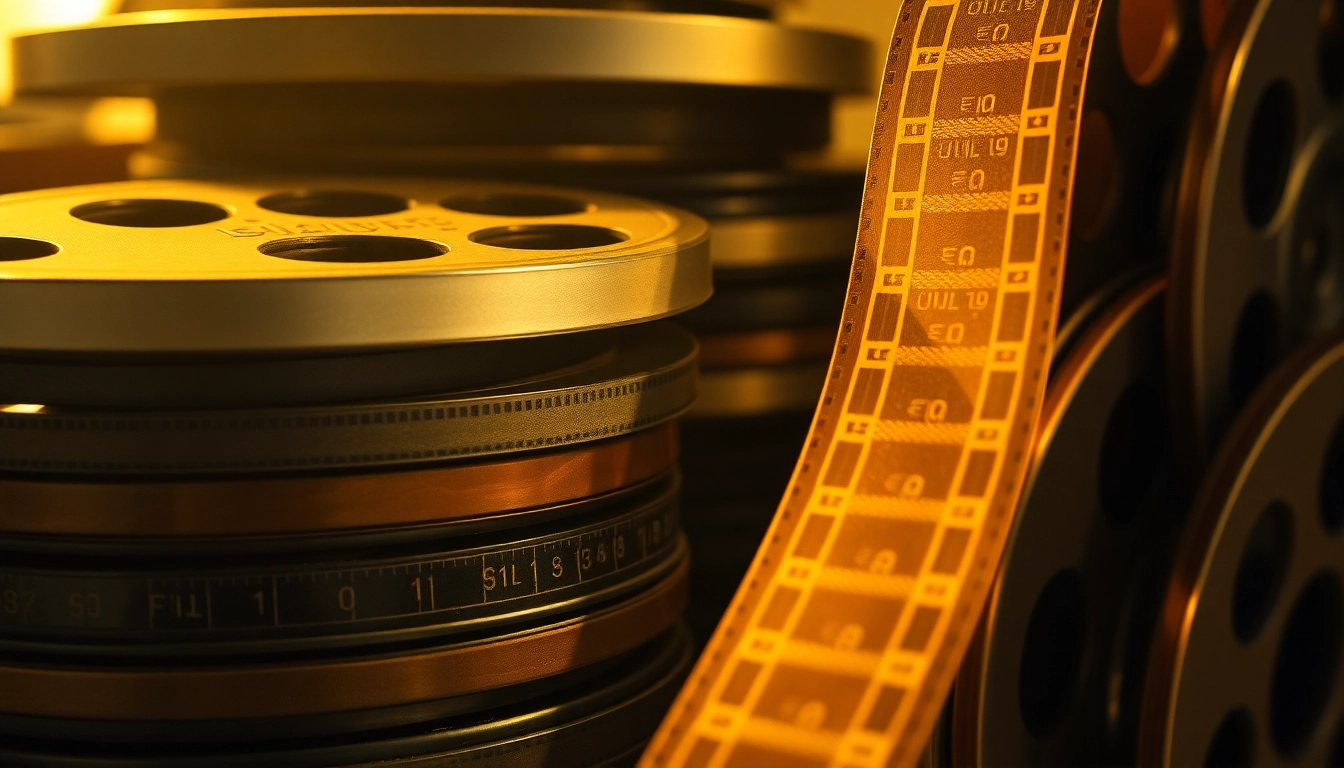Understanding Public Domain Films
What Are Public Domain Films?
Public domain films are cinematic works that are no longer protected by copyright laws, allowing anyone to use, distribute, and adapt them without seeking permission or paying royalties. This lack of copyright protection typically occurs when the copyright term expires, which varies significantly by jurisdiction. In the United States, for instance, works published before 1928 have entered the public domain, although other films may also lose their copyright status under various circumstances such as failure to renew copyright. The allure of public domain films is their accessibility and the cultural heritage they represent, reminiscent of a time when filmmaking was often focused on artistry and storytelling over commercial gain.
History and Evolution of Film Copyright
The history of film copyright is a complex tapestry woven through the development of cinematic technology and intellectual property laws. Initially, films were not explicitly protected under copyright law, as copyright focused primarily on written works. It wasn’t until the growth of the film industry in the early 20th century that filmmakers sought protection for their work.
In 1909, the U.S. copyright law began to include motion pictures, allowing filmmakers to claim exclusive rights for a period of 28 years, with a potential renewal for another 28 years. Over the decades, the duration of copyright protection has been extended, leading to the creation of the Copyright Term Extension Act of 1998, often referred to as the “Mickey Mouse Protection Act,” effectively extending copyright for an additional 20 years. However, these extensions mean that films from earlier periods can quickly fall into the public domain once their copyright status expires, allowing modern audiences to explore these artistic treasures.
How Public Domain Status is Determined
Determining whether a film is in the public domain involves several factors. Generally, films released in the United States before 1928 are automatically considered public domain. Additionally, films that had their copyright not renewed within the required timeframe or made before 1978 without appropriate notices also may fall into public domain status.
Another avenue for public domain status arises from legislative actions. For example, films produced by the U.S. government are often considered public domain since they were created using taxpayer funds. Furthermore, films from foreign countries may also enter public domain based on the laws of their respective jurisdictions, which may differ significantly from U.S. copyright law.
Benefits of Watching Public Domain Films
Accessing Classic Films for Free
Perhaps the most appealing aspect of public domain films is their free accessibility. These films can be downloaded, streamed, or screened without incurring any licensing fees, making them an excellent resource for educators, students, and cinema enthusiasts alike. This free access is particularly beneficial for those who seek to experience classic cinema without the financial burden often associated with modern film distribution.
Educational Uses of Public Domain Content
Public domain films serve as valuable educational tools. Teachers and educators can incorporate these films into lesson plans to discuss themes like history, art, and social issues prevalent during the film’s release. For example, silent films may highlight advancements in visual storytelling, while the context of classic horror films may provide insights into societal fears and cultural shifts over time.
Additionally, public domain films can be utilized by media studies programs, helping students grasp the evolution of cinema, techniques in filmmaking, narrative structures, acting styles, and much more. Furthermore, film analysis of these works can encourage critical thinking and inspire new creative projects.
Creative Projects and Public Domain Films
Public domain films are a treasure trove for artists and filmmakers looking to explore new ideas without the constraints of copyright. New filmmakers and creators can repurpose old films into new formats, blending cultural dialogues with original artistic visions. Such projects may include remixing, mashups, or adaptations into new narrative forms.
Moreover, musicians can derive inspiration by composing scores, while visual artists may repurpose footage for animation, video art installations, or even as backgrounds in performance art. This creative freedom fosters innovation and redefines the boundaries of ownership in art.
Popular Public Domain Films to Explore
Timeless Classics and Hidden Gems
Those interested in exploring the world of public domain films will find a wealth of timeless classics alongside lesser-known treasures. Notable examples include films like “It’s a Wonderful Life” (1946), “Night of the Living Dead” (1968), and “The Little Princess” (1939). These films have not only shaped cinema but continue to resonate with audiences today.
Hidden gems like “The Phantom of the Opera” (1925) offer a glimpse into early horror cinema, while “The General” (1926), starring Buster Keaton, showcases mastery in silent film comedy. The boundless array of content anchored in cultural conversations and cinematic excellence offers something for everyone.
Iconic Directors and Their Works
Public domain films also give audiences a chance to experience the works of iconic directors like D.W. Griffith, Sergei Eisenstein, and Charlie Chaplin. Griffith’s “Birth of a Nation” (1915) is historically significant though controversial, while Eisenstein’s “Battleship Potemkin” (1925) revolutionized montage editing. Charlie Chaplin’s “The Kid” (1921) remains a testament to silent film’s emotional depth and humor.
These directors pushed the boundaries of visual storytelling, paving the way for future generations of filmmakers.
Genres of Public Domain Films
Public domain films span a wide range of genres, including drama, comedy, horror, and documentary. Film enthusiasts can find classic musicals like “The Wizard of Oz” (1939) alongside thrilling action movies such as “The Mark of Zorro” (1920). Furthermore, classic horror films like “Dracula” (1931) form a fundamental part of the horror genre’s evolution.
Documentary films like “The River” (1938) provide educational insights into various aspects of American life. The diversity of genres within the public domain ensures a plethora of viewing options that cater to varied interests.
Where to Find Public Domain Films
Online Resources to Access Films
Several websites act as repositories for public domain films, making it relatively easy to find and enjoy classic cinema. Platforms like the Internet Archive, Public Domain Movies, and Classic Cinema Online host vast libraries of films waiting to be explored. Additionally, the National Film Registry often highlights culturally significant films, adding to their public domain vault and facilitating public access.
Libraries and Film Archives
Beyond online platforms, libraries and film archives also provide access to public domain films. Many public libraries lend films or have viewing rooms for patrons, allowing for physical access to this historical content. Institutions such as the Library of Congress and the British Film Institute boast extensive collections of public domain films, available for research and educational purposes. Accessing these repositories can provide context and depth to the learning experience.
Community Platforms for Sharing Films
With the rise of digital technology, community platforms like YouTube and Vimeo feature numerous public domain films uploaded by users passionate about sharing cinematic history. These platforms connect viewers to a broad audience while allowing for participation in discussions about film history and analysis.
Additionally, forums dedicated to classic cinema often share links and resources to public domain films. This community engagement enhances the viewing experience, fostering discussions that highlight various interpretations and analyses of the films.
Legal Aspects of Using Public Domain Films
Copyright Laws and Public Domain Guidelines
The legal landscape governing public domain films can be complex, and understanding copyright law is crucial for both creators and consumers. While public domain works do not require licensing or payment, it is paramount to ensure that the selected film is genuinely in the public domain before use to avoid infringing on existing copyrights. When preparing to use a film, conducting thorough research and cross-referencing with authoritative sources is essential.
How to Verify Film’s Public Domain Status
Verifying a film’s public domain status often involves checking release dates, copyright notices, and renewal registrations. For films released after 1928, it is crucial to assess copyright renewal status; if the copyright was not renewed, the film may have entered the public domain.
Resources like the U.S. Copyright Office’s database and the Internet Archive are excellent starting points for confirming the public domain status of specific films. For works created after 1978, legal guidance from copyright scholars or intellectual property attorneys may provide clarity on complex cases.
Common Misconceptions About Public Domain
A common misconception regarding public domain films is the idea that once a film enters public domain, it can be freely manipulated and modified for any purpose. While this is often true, certain public domain works may still contain elements like trademarks or performance rights, which could limit their commercial use.
Moreover, navigational challenges often arise when searching for public domain films. Not all platforms maintaining public domain content make it immediately clear, thus necessitating diligent research to uncover valuable resources.



